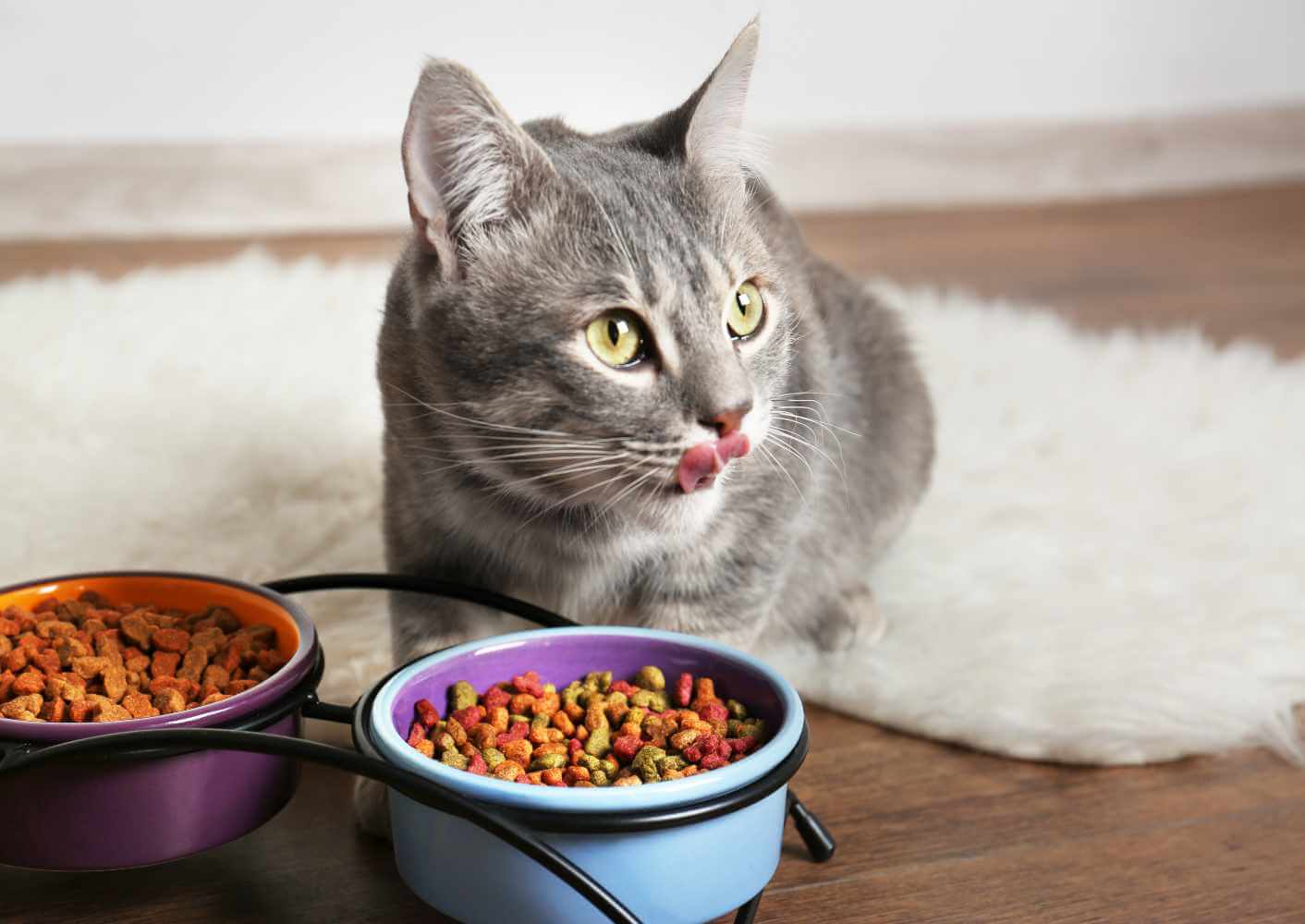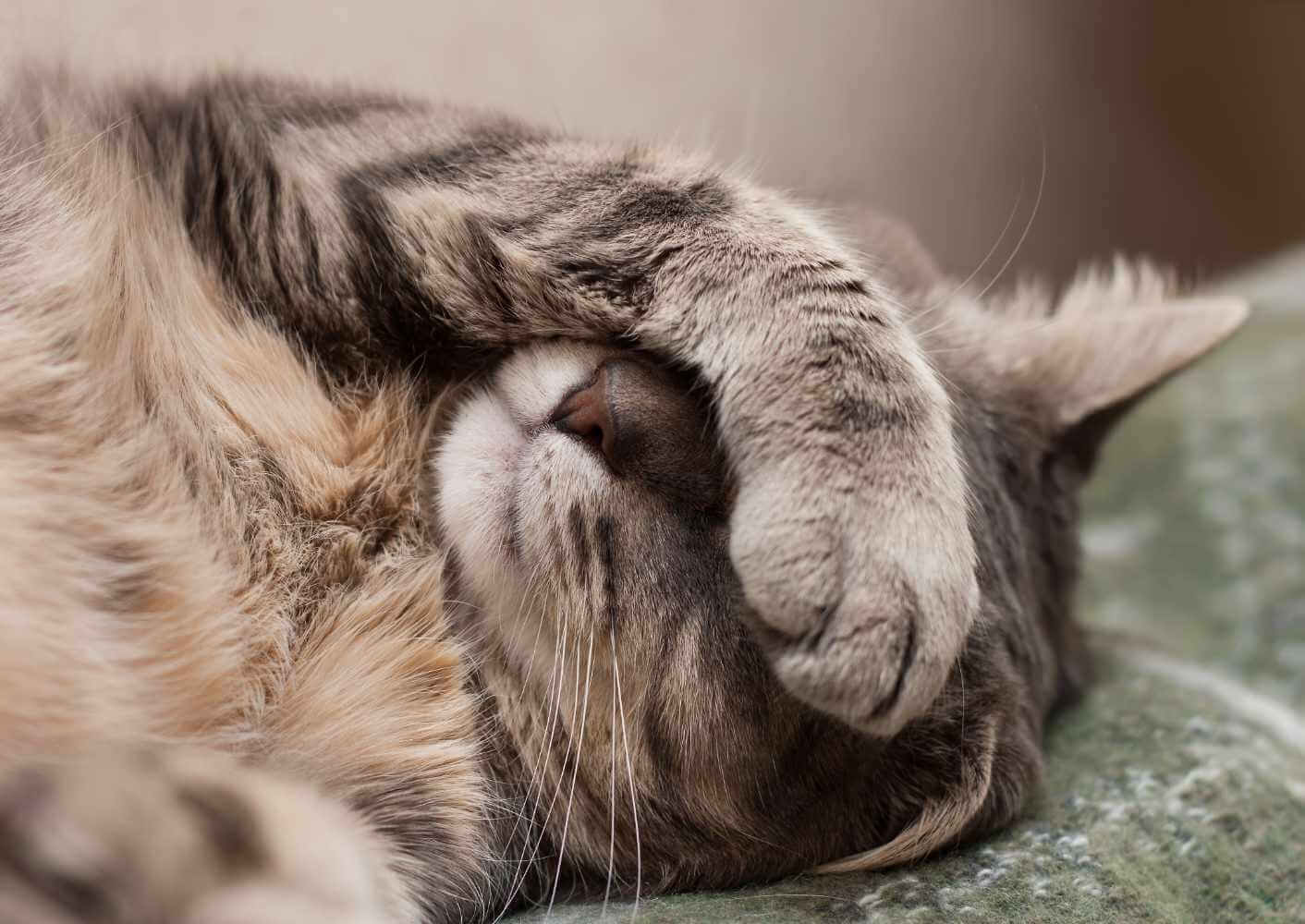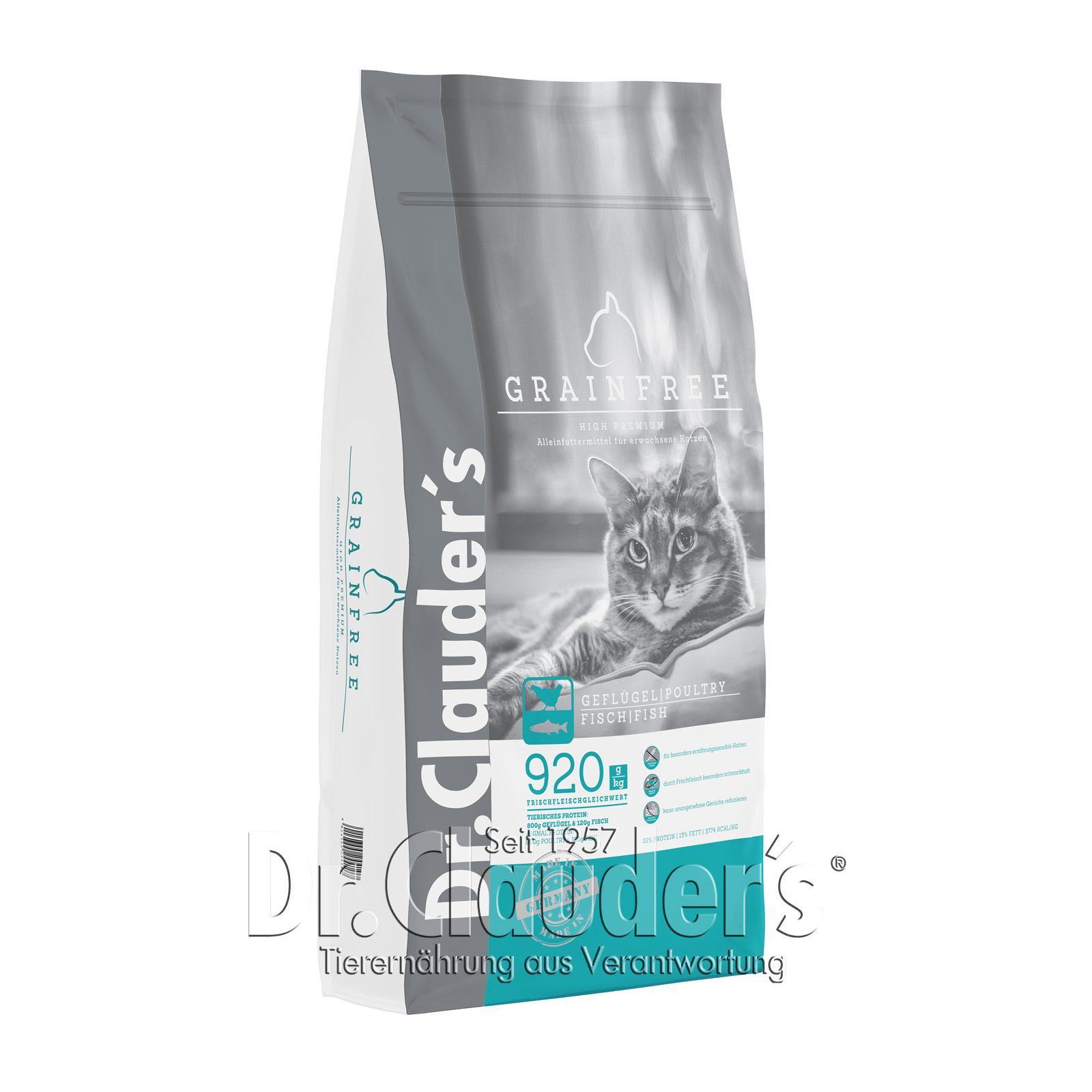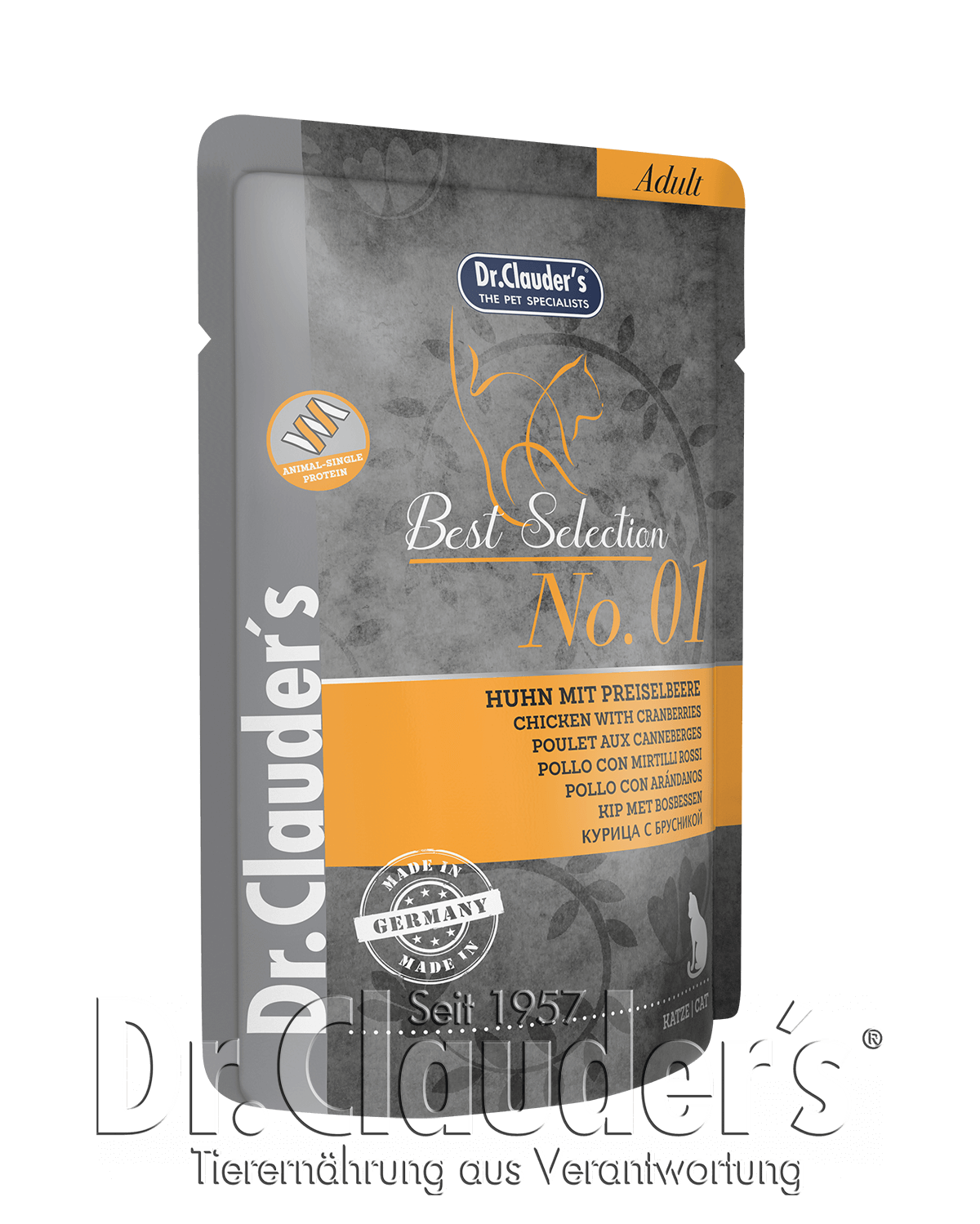Included in this article:
- Symptoms
- Intolerance or allergy?
- Trigger
- Elimination and provocation diet
- Points to note
- Product tips
Food intolerance or allergy in cats

Nutrition needs harmony - a balanced cat diet is vital for our velvet paw. To stay healthy and vital, your pet needs:
- Ingredients that are coordinated with each other
- besides muscle meat and offal, also vegetable food (raw fibre), animal and vegetable fat, minerals, trace elements and vitamins.
These could be signs of an allergy or food intolerance. For you as a cat owner, it is a challenge to interpret the signs correctly, because the symptoms can also occur with other diseases or parasites.
In this article you will learn how to interpret the symptoms correctly, which tests you can carry out and how you can help your pet.
Symptoms of food intolerance or allergy in cats
Food intolerance or allergy is the third most common cause of discomfort in cats. On the surface they show the same symptoms - these include:
- Vomiting or diarrhoea
- Red or inflamed skin
- Flatulence
- Chronic ear problems
- Frequent scratching
- Poor growth in young cats
- Severe hair loss
- Coughing, wheezing or sneezing
- Asthma can also be a sign of food allergy in cats.
Intolerance or food allergy: What is the difference?
Clinical symptoms such as frequent scratching, diarrhoea or severe hair loss are not sufficient to clearly distinguish a food allergy from an intolerance, as they manifest symptomatically in the same way.

Intolerances in cats
True food allergies occur less frequently in cats than intolerances. A food intolerance is a hypersensitivity reaction that does not involve the cat's own defence system. The reasons can be of different nature - for example, a lack of enzymes can be the trigger for a hypersensitivity reaction. In this case, the organism is unable to digest certain components of the food. For example, lactose intolerance is widespread among adult cats: The activity of the enzyme lactase continues to decrease in the body of the growing cat. However, the cat's organism needs lactase to break down the lactose in cow's milk, etc. Undigested lactose typically causes digestive problems.
Food allergies in cats
A true food allergy is a severe reaction caused by the immune system to components of food that are actually harmless. The organism forms antibodies to certain protein structures in the food. The vet can detect these by means of a blood test. The reaction will then always occur when your cat comes into contact with this food: even the smallest doses of the allergen are enough to trigger an immune response.
What is a cross-allergy?
If a cat suffers from an allergy, the antibodies formed can recognise so-called epitopes - structures made of proteins and sugar compounds - on the allergen. If, for example, a vegetable to which the cat is allergic contains a molecule that has similar epitopes to the actual allergen, the antibodies can also dock onto these similar epitopes and cause an allergic reaction.
Triggers for food allergies and intolerances in cats
Cats often develop food allergies between the ages of two and six years and then suddenly react to certain food components - this can also affect food that they previously tolerated without any problems. Triggers of food allergies or intolerances are proteins of vegetable or animal origin, i.e. protein components in the food. In rare cases, a carbohydrate source can also be the reason. Every protein in the feed is potentially capable of triggering an allergic reaction, a subsequent cross-allergy or an intolerance.
The most common food allergens in cats include:
- Beef
- Chicken
- Dairy products
- Eggs
- Fish
- Rarely: Soy
Diagnosis: elimination and subsequent provocation diet.
Food allergies or food intolerances can last a lifetime in cats. The main goal in treating allergies or adverse reactions to food is to find and avoid the food ingredient that is responsible for causing the skin or gastrointestinal symptoms. But which ingredients are these and how can you unmask them? For diagnosis, the method of an elimination diet followed by a provocation diet has become established.
Important in advance: The veterinary clinic must rule out other forms of allergy such as flea bite allergy, an environmental allergy, infections, parasite infestation or a certain deficiency as triggers for the symptoms.
Procedure of elimination and subsequent provocation diet:
- Feeding of a hypoallergenic food (from the vet) - usually based on hydrolysed proteins - which means that a protein is partially broken down to make it more digestible.
- For 10-12 weeks, your cat will only be fed this food.
- Stay consistent: During the diet, you must not feed your cat any treats or anything "foreign".
- Medical evaluation: The effectiveness of the diet can only be determined after about 12 weeks. During this time, the vet must rule out a new infestation or infection. If the symptoms disappear, the cause is an allergy or intolerance.
- After 12 weeks, feed your cat the old food again - if the same symptoms appear again after about 2 weeks, it is a food allergy or intolerance. It is therefore important to avoid the identified allergens in the future and to remove the triggering food components from the cat's menu.
How to help your allergic cat
If your cat has an allergy, choosing the right special food is essential. Food allergies, like other allergies, are incurable. Instead, they are treated by avoiding foods that trigger allergic outbreaks. Therefore, use special allergy food for your cat that is balanced and contains as few additives as possible. If your cat is allergic to a particular meat, you should try a food with an alternative protein source. If this does not help, your cat may need a food with specially broken down proteins (hydrolysed proteins). Some cats may react dramatically to traces of an offending allergen, requiring carefully controlled hypoallergenic foods, while other cats have a higher tolerance and may be suited to an adapted version of a typical cat food.
It is important to involve the veterinary clinic treating your cat when deciding on the right food.
You should remember this
Dr.Clauder's for sensitive stomachs and allergy sufferers
If your cat is showing allergy symptoms or food intolerance is suspected, a long-term change in diet is necessary. Feed your cat allergy foods with hypoallergenic properties to quickly relieve symptoms and prevent recurrence.
With careful dietary control, the prognosis for cats with food allergies is usually good.




